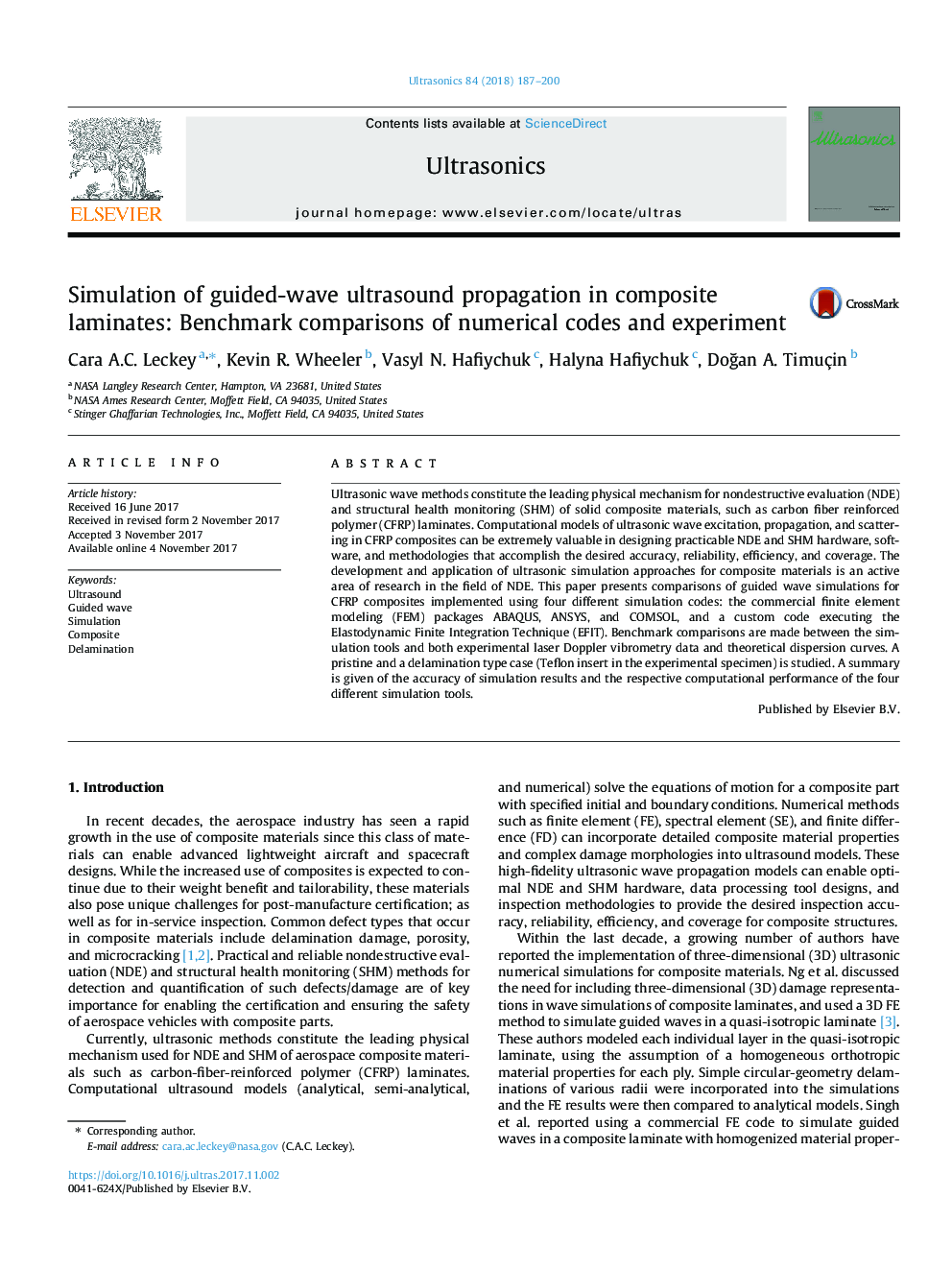| Article ID | Journal | Published Year | Pages | File Type |
|---|---|---|---|---|
| 8129976 | Ultrasonics | 2018 | 14 Pages |
Abstract
Ultrasonic wave methods constitute the leading physical mechanism for nondestructive evaluation (NDE) and structural health monitoring (SHM) of solid composite materials, such as carbon fiber reinforced polymer (CFRP) laminates. Computational models of ultrasonic wave excitation, propagation, and scattering in CFRP composites can be extremely valuable in designing practicable NDE and SHM hardware, software, and methodologies that accomplish the desired accuracy, reliability, efficiency, and coverage. The development and application of ultrasonic simulation approaches for composite materials is an active area of research in the field of NDE. This paper presents comparisons of guided wave simulations for CFRP composites implemented using four different simulation codes: the commercial finite element modeling (FEM) packages ABAQUS, ANSYS, and COMSOL, and a custom code executing the Elastodynamic Finite Integration Technique (EFIT). Benchmark comparisons are made between the simulation tools and both experimental laser Doppler vibrometry data and theoretical dispersion curves. A pristine and a delamination type case (Teflon insert in the experimental specimen) is studied. A summary is given of the accuracy of simulation results and the respective computational performance of the four different simulation tools.
Related Topics
Physical Sciences and Engineering
Physics and Astronomy
Acoustics and Ultrasonics
Authors
Cara A.C. Leckey, Kevin R. Wheeler, Vasyl N. Hafiychuk, Halyna Hafiychuk, DoÄan A. Timuçin,
